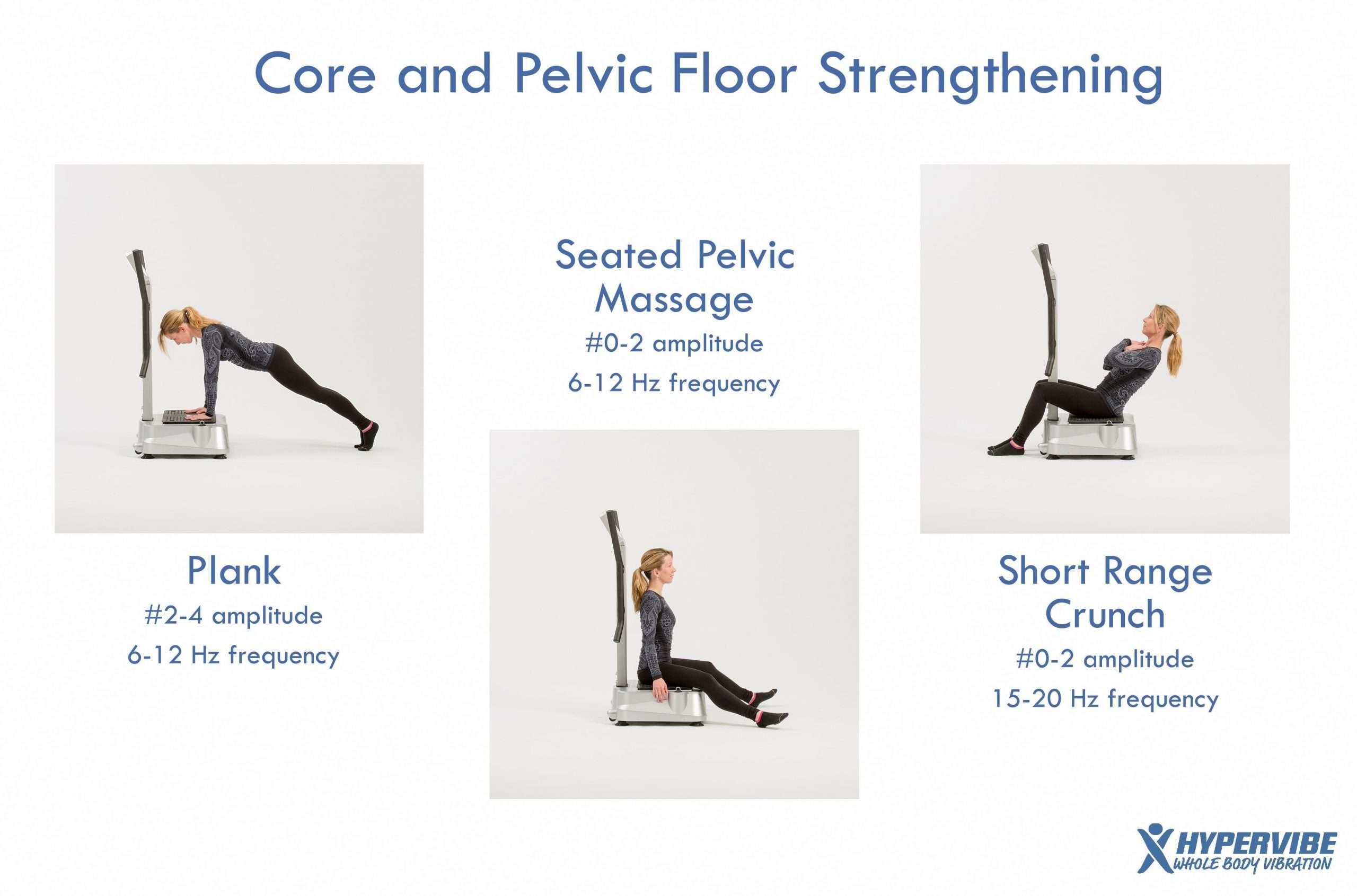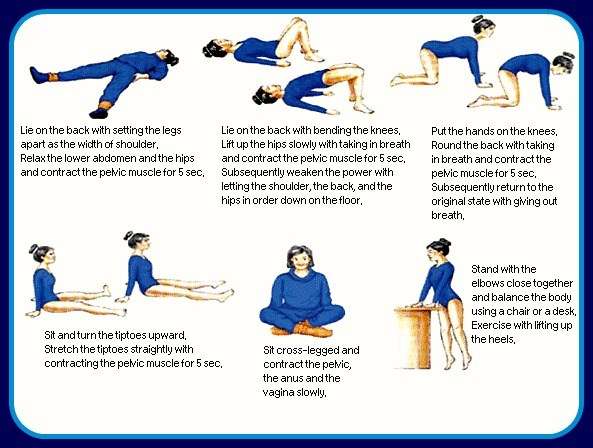Can Kegels Improve Sex
Kegels improve blood circulation to the pelvic floor and vagina, and this may be helpful for arousal and lubrication. A lot of women, after childbirth, feel like their vagina is not as tight as it was before and they want to have surgery for that. But strengthening the pelvic floor muscles with kegel exercises can make it a little bit more taut. It might be tighter because women are better able to contract their muscles, and that might improve sensation. Even if its psychological, it can help women feel better about their pelvic floor, so theres a positive benefit.
Who Can Benefit From Pelvic Floor Exercises
Both men and women can benefit from pelvic floor exercises. If your incontinence is caused by weak pelvic floor muscles, experts recommend that you try this method as a safe, first option. These exercises are most commonly practised by those with , who leak urine when pressure is put on the bladder. They are also useful for those with a strong, sudden urge to urinate just before losing a large amount of urine, which is also known as . Individuals with , which is a mix of stress and urge incontinence, are also advised to try the exercises. Pelvic floor exercises are, however, less helpful for those who experience severe urine leakage or have no bladder control. They should also not be relied upon by those who unexpectedly leak small amounts of urine due to a full bladder .
One of the reasons why urologists and professionals are advocates of pelvic floor muscle exercises is that they have no serious adverse effects. Evidence over the years has shown the exercises to be hugely successful in reducing and even fully treating incontinence. A prospective randomized trial was conducted with 71 women seen for treatment of in two referral clinics. Forty-four percent of enrollees in the study had a 50% improvement in the number of daily incontinence episodes. For all individuals, the mean number of daily incontinence episodes decreased from 2.6 to 1.7 for genuine stress incontinence and from 3.0 to 1.7 for mixed incontinence.
Tips To Keep Your Bladder Healthy
People rarely talk about bladder health, but everyone is affected by it. Located in the lower abdomen, the bladder is a hollow organ, much like a balloon, that stores urine. Urine contains waste and extra fluid left over after the body takes what it needs from what we eat and drink. Each day, adults pass about a quart and a half of urine through the bladder and out of the body.
As people get older, the bladder changes. The elastic bladder tissue may toughen and become less stretchy. A less flexible bladder cannot hold as much urine as before and might make you go to the bathroom more often. The bladder wall and pelvic floor muscles may weaken, making it harder to empty the bladder fully and causing urine to leak.
While you cant control everything that affects your bladder, here are 15 steps you can take to keep it as healthy as possible:
Don’t Miss: I Think I Have A Urinary Tract Infection
What About Hormone Therapy And Urinary Incontinence Symptoms
There werent enough women receiving hormone therapy for the authors to draw conclusions about its impact, notes Faubion. It would have been nice to be able to determine the effect of hormone therapy although as the authors mention, systemic hormone therapy has not been shown to help with urinary incontinence if anything it has been implicated in worsening it, she says.
Topical estrogen, such as a vaginal estrogen cream, has been shown to be helpful in urge incontinence, and so it would be helpful to have research to provide further clarification of this, says Faubion.
Dont Miss: How Do You Get A Urinary Tract Infection From Intercourse
How Do You Do Pelvic Floor Exercises Correctly

- Sit in a chair with your knees slightly apart. Imagine you are trying to stop wind escaping from your back passage . You will have to squeeze the muscle just above the entrance to the anus. You should feel some movement in the muscle. Don’t move your buttocks or legs.
- Now imagine you are passing urine and are trying to stop the stream. You will find yourself using slightly different parts of the pelvic floor muscles to the first exercise . These are the ones to strengthen.
- If you are not sure that you are exercising the right muscles, put a couple of fingers into your vagina. You should feel a gentle squeeze when doing the exercise. Another way to check that you are doing the exercises correctly is to use a mirror. The area between your vagina and your anus will move away from the mirror when you squeeze.
- The first few times you try these exercises, you may find it easier to do them lying down.
You May Like: Urinary Tract Infection Does It Go Away On Its Own
Exercise Or Programs To Improve Stress Incontinence
Uploaded by urinaryincontinences.com on July 23, 2021 at 6:00 pm
Thanks! Share it with your friends!
Exercise or Programs to Improve Stress Incontinence
Stress incontinence is a condition that results from an increase in pressure in the abdomen that increases the stress in the pelvis which results in urine leakage. These increases in pressure are caused by coughing, laughing, sneezing, and exercise. Women most commonly suffer from this condition as they grow older. And women who have had children have a higher risk of developing this condition.
Urinary incontinence or stress incontinence is more common in women over 50 but it can also affect younger people, especially women who have just given birth. About 12 million adults in the United States suffer from this condition.
There are several different reasons that people can suffer from stress incontinence which will affect the exercise or programs used to improve stress incontinence. These reasons can include drying of the skin in the vagina, weakened pelvic muscles, enlarged prostate gland or prostate surgery, or constipation. Once the cause of the problem is diagnosed then appropriate treatment can be recommended.
For most women stress incontinence is not a normal part of aging but rather a result of stresses placed on the body over the years combined with weakened pelvic muscles. Women who have given birth are at greater risk for weaker pelvic muscles.
Pelvic Floor Muscle Training Can Improve Symptoms Of Urinary Incontinence
Two-thirds of women with any type of urinary incontinence who have pelvic floor muscle training see improvement or cure compared with only a third of women who receive no treatment or inactive treatments. It is even more effective for women with stress incontinence, with three-quarters of women reporting improvement or resolution of symptoms, such as episodes of leakage.
This systematic review included 31 trials and 1,817 women with any type of incontinence stress, urgency or mixed urinary incontinence.
Findings support current guidelines to offer pelvic floor exercises as first-line conservative management in women with urinary incontinence. Long-term effectiveness and cost-effectiveness require further evaluation.
Don’t Miss: Foods For Healthy Urinary Tract
Urinary Incontinence Hampers Normal Life May Cause Depression
Urinary incontinence can be brought on due to physical changes like menopause or childbirth in women. And while women make up the majority of those with incontinence in the United States, men too may develop the problem.1 An enlarged prostate, neurological problems, chronic coughing, obesity, and old age are some of the possible causes of incontinence in men.2
This problem can affect your self-esteem as well as your ability to function normally at home or in the workplace. It can also hamper your activity levels and mobility in general and take its toll on your sexual activity. It isnt surprising that it is also a trigger for depression in many people. Thankfully, some simple, nonsurgical ways can improve your condition and gain control over this otherwise potentially debilitating problem.3 What follows are some exercises you can do anytime, anywhere to help strengthen your pelvic floor muscles and regain proper control.
Tips For Performing Kegel Exercises:
- Try not to hold your breath or cross your legs whilst doing these exercises
- Do not tense the muscles in your buttocks, abdomen or legs
- Continue doing the exercises daily for maximum effect.
- Ensure you are aware of which muscles are being contracted. When you first start doing these exercises, you may begin to use other muscles to help. However, it is important to become aware of which muscles are being contracted for safety and to ensure maximum effect.
If you do Kegels three times a day, you should see better bladder control in three to six weeks. Urologists can offer additional tips on how to find and exercise the right muscles.
You May Like: What Drugs Are Used For Urinary Incontinence
When To Do Kegel Exercises
Most people prefer doing Kegel exercises while lying down on a bed or sitting in a chair. You can do them in any position you feel comfortable in. Doing Kegel exercises while standing can be very helpful because thats usually when urinary leakage happens.
To keep your urine from leaking, try to do a Kegel exercise before these activities:
- When standing up
Managing Ui With A Urologist
Living with urinary incontinence can be very difficult, but with proper treatment and maintenance, you will be able to achieve a high quality of life. In addition to UI treatment, USOC offers a variety of services designed to ensure your urinary health including procedures for diagnosing and treating kidney stones, pelvic prolapses, infertility, and cancers of various types. To stay on top of your health, click the button below to schedule an appointment.
Don’t Miss: How To Cure Urinary Incontinence
Who Could Benefit From Pelvic Floor Exercises
People who have faecal incontinence or bowel leakage may be helped by doing some specific exercises for the sphincter and pelvic floor muscles. These exercises could help improve the strength of the sphincter and pelvic floor muscles and improve bowel control. Talk to your healthcare professional before doing these exercises to see whether they could help you.
Pelvic Floor Exercises can help both men and women gain more control over bowel movements. These exercises are also used for men and women with bladder control problems.
What Types Of Things Does Uchicago Medicines Center For Pelvic Health Do That Make It Stand Out From Other Hospitals

Were lucky that our team of specialists at the Center for Pelvic Health is truly a multispecialty group. So, we are able to manage a very wide spectrum of conditions. We can provide care for any condition related to the pelvic floor. We have a very strong colorectal team, which is focused on pelvic floor dysfunction. All the members of the center are very dedicated and cherish very collaborative relationships. Thats really our strength. We include urogynecologists, urologists, colorectal surgeons, pelvic floor physical therapists, pain specialists, minimally invasive gynecological surgeons, radiologists and more.
Read Also: Goat Urinary Tract Infection Treatment
What Did This Study Do
This systematic review included 31 randomised controlled trials involving 1,817 women from 14 countries. Two trials were based in the UK. The studies included women with stress, urgency or mixed urinary incontinence. Women were randomly allocated to pelvic floor muscle training, no treatment, or other inactive control treatments. On average, trials followed up patients for less than 12 months.
Overall, trials included were of moderate quality, and outcomes appeared to be consistent. However, most trials failed to include a clear description of the training or its intensity which could influence the outcomes. Few trials had long-term follow up.
Pelvic Floor Exercises And Stress Incontinence
Reviewed byDr Hannah Gronow
Pelvic floor exercises, also known as Kegel exercises, have numerous benefits and may help cure stress incontinence. Pelvic floor exercises are also useful to prevent incontinence for women who have had children. In addition, some people feel that having strong pelvic floor muscles heightens the pleasure when having sex.
Also Check: Staphylococcus Aureus Urinary Tract Infection Treatment
How To Find The Right Muscles
A Kegel exercise is like pretending you have to urinate and then holding it. You relax and tighten the muscles that control urine flow. It is important to find the right muscles to tighten.
Next time you have to urinate, start to go and then stop. Feel the muscles in your vagina , bladder, or anus get tight and move up. These are the pelvic floor muscles. If you feel them tighten, you have done the exercise right. Your thighs, buttock muscles, and abdomen should remain relaxed.
If you still are not sure you are tightening the right muscles:
- Imagine that you are trying to keep yourself from passing gas.
- Women: Insert a finger into your vagina. Tighten the muscles as if you are holding in your urine, then let go. You should feel the muscles tighten and move up and down.
- Men: Insert a finger into your rectum. Tighten the muscles as if you are holding in your urine, then let go. You should feel the muscles tighten and move up and down.
Helpful Tips For Managing Urinary Retention And Incontinence
Urinary incontinence is a prevalent issue, with anywhere from 25-50 percent of women reporting an episode in the past year.
Managing urinary conditions can be frustrating and time consuming, but there are helpful tips and lifestyle changes that can reduce the burden this condition causes.
Topics in this Post
Don’t Miss: Bard Latex Free Urinary Drainage Bag
A Routine Is Key To Reaping The Benefits
It is important to make these exercises a regular part of your day in order to maximize the benefits, but unlike traditional exercises, you can perform kegels anytime, anywhere. Once you get the hang of which muscles to target, you can do these at your desk, in the car, while waiting in line at the grocery store or while watching TV.
Kegeling can help improve urinary control in men and women, but it can take a few weeks or months to see an improvement. Even if you do not experience significant progress, keep in mind that these exercises will definitely help to prevent incontinence and other conditions from worsening. If youre looking for additional options that can help strengthen the pelvic core, try adding an exercise program like Pilates or yoga to your routine.
For caregivers who are currently helping loved ones manage incontinence and have firsthand experience with the life-changing effects of this condition, this is a great opportunity for you to be proactive about your own health. It may also be worth asking your loved ones doctor if they could benefit from pelvic floor muscle training as well.
What Can Happen If You Do A Kegel Incorrectly
Women often incorrectly contract their buttocks or gluteal muscles, or inner thighs, and basically squeeze their thighs together. Many strain and increase their abdominal pressure. Thats not good for two reasons. One, its ineffective. And two, straining results in the opposite effect. Chronic straining is a risk factor for developing and worsening problems like pelvic organ prolapse or stress incontinence.
Don’t Miss: How Treat Urinary Tract Infection Naturally
What Are The Pelvic Floor Muscles
The pelvic floor muscles are a group of muscles that wrap around the underneath of the bladder and rectum. Your doctor may advise that you strengthen your pelvic floor muscles:
- If you develop stress incontinence. In stress incontinence, urine leaks when there is a sudden extra pressure on the bladder. Urine tends to leak most when you cough, laugh, or exercise . Strengthening the pelvic floor muscles can often cure stress incontinence.
- After childbirth. The common reason for the pelvic floor muscles to become weakened is childbirth. If you do pelvic floor muscle exercises after childbirth, it may prevent stress incontinence developing later in life.
Types Of Urinary Incontinence

There are 5 types of urinary incontinence.
- Stress incontinence Stress incontinence is when urine leaks because of sudden pressure on your lower stomach muscles, such as when you cough, laugh, lift something or exercise. Stress incontinence usually occurs when the pelvic muscles are weakened, for example by childbirth or surgery. Stress incontinence is common in women.
- Urge incontinence This occurs when the need to urinate comes on very suddenly, often before you can get to a toilet. Your body may only give you a warning of a few seconds to minutes before you urinate. Urge incontinence is most common in the elderly and may be a sign of a urinary tract infection or an overactive bladder.
- Overflow incontinence This type of incontinence is the uncontrollable leakage of small amounts of urine. It’s caused by an overfilled bladder. You may feel like you can’t empty your bladder all the way and you may strain when urinating. This often occurs in men and can be caused by something blocking the urinary flow, such as an enlarged prostate gland or tumor. Diabetes or certain medicines may also cause the problem.
- Functional incontinence This type occurs when you have normal urine control but have trouble getting to the bathroom in time. You may not be able to get to the bathroom because of arthritis or other diseases that make it hard to move around.
- Mixed incontinence This type involves more than one of the types of incontinence listed above.
Don’t Miss: Pain In Urinary Tract Male